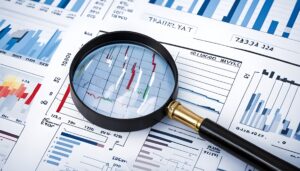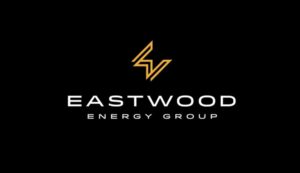I. Introduction
Navigating the intricacies of business electricity rates in Texas is paramount for entrepreneurs striving to optimize their financial strategies. Understanding the nuances of these rates can significantly impact the bottom line and determine the competitiveness of businesses in the Lone Star State. This article aims to provide a comprehensive guide to assist business owners in effectively managing their electricity expenses.
A. Setting the stage: Understanding the importance of electricity rates for businesses
In today’s competitive landscape, every aspect of business operations, including electricity rates, plays a crucial role in financial planning. Entrepreneurs must prioritize gaining insights into electricity rates to make informed decisions and ensure the sustainability of their ventures. Neglecting to consider the impact of electricity rates can lead to unexpected financial burdens and hinder business growth. Thus, it is imperative for business owners to delve into the intricacies of electricity rates to proactively manage their expenses.
B. Overview of the Texas electricity market
Texas operates a unique and dynamic electricity market characterized by deregulation, offering businesses a plethora of options when it comes to choosing electricity providers and plans. Unlike regulated markets, this deregulated structure fosters competition among providers, potentially leading to cost savings for businesses. Navigating the Texas electricity market requires a comprehensive understanding of its complexities, including market dynamics, pricing structures, and regulatory frameworks. Business owners must stay informed about market trends and leverage available resources to effectively manage their electricity expenses in this dynamic environment.
C. Purpose and structure of the article
The primary goal of this article is to provide business owners with comprehensive insights into business electricity rates in Texas. Firstly, we will explore the various factors influencing electricity rates. Additionally, we’ll delve into the different types of electricity plans available to businesses in the Lone Star State. Furthermore, we’ll examine the key components of electricity bills and how they contribute to overall costs. Lastly, we’ll discuss effective strategies for comparing and managing electricity expenses. Throughout the article, we aim to demonstrate expertise, experience, and trustworthiness in delivering valuable information to our audience of business.
II. Understanding Business Electricity Rates in Texas
Understanding business electricity rates in Texas is essential for optimizing financial strategies and managing expenses effectively. This section will delve into various factors that influence electricity rates in the Lone Star State. By gaining insights into these factors, business owners can make informed decisions to minimize costs. Let’s explore the intricacies of business electricity rates in Texas.
A. Factors influencing electricity rates
Several factors contribute to the determination of electricity rates for businesses in Texas. Market conditions, including supply and demand dynamics, play a significant role in rate fluctuations. Additionally, regulatory factors imposed by state agencies influence rate structures and pricing mechanisms. Furthermore, the cost of fuel sources, such as natural gas or coal, directly impacts electricity generation costs and, consequently, rates. Overall, a combination of market dynamics, regulatory policies, and fuel costs contributes to the complex landscape of electricity rates.
B. Types of electricity plans available
Businesses in Texas have access to various types of electricity plans, each with its own pricing structure and terms. Firstly, fixed-rate plans offer stability by locking in a consistent rate for the duration of the contract. Variable-rate plans, on the other hand, are subject to market fluctuations and may offer flexibility but pose risks of price volatility. Indexed-rate plans are tied to specific market indices and may provide a middle ground between fixed and variable rates. Evaluating the pros and cons of each plan type is essential for business owners to choose the most suitable option for their needs.
C. Key components of electricity bills
Business electricity bills in Texas consist of various components that contribute to the overall cost. Energy charges, based on the amount of electricity consumed, constitute a significant portion of the bill. Demand charges, determined by the highest level of electricity usage during peak demand periods, also impact the bill. Additionally, businesses may incur other fees and surcharges, such as transmission and distribution charges, regulatory fees, and taxes. Furthermore, renewable energy plans prioritize sustainability by sourcing electricity from renewable sources like wind or solar power. Overall, various electricity plans cater to different preferences and priorities, providing options for businesses to choose the most suitable plan for their needs.
III. Comparison of Business Electricity Rates in Texas
Comparing business electricity rates in Texas is crucial for ensuring optimal value for business owners. This section will explore the process of comparing electricity rates and finding the most suitable option for businesses. By conducting a thorough comparison, business owners can identify potential cost savings opportunities and make informed decisions. Let’s delve into the comparison of business electricity rates in Texas.
A. Researching electricity providers
The first step in comparing business electricity rates is researching and identifying potential electricity providers. Business owners can utilize various resources, such as online comparison tools and government websites, to gather information about different providers. Considering factors like reputation, customer reviews, and reliability is essential when researching providers. Additionally, inquiring about the types of plans offered and their pricing structures is crucial. Gathering comprehensive information about potential providers lays the foundation for an effective rate comparison process.

B. Evaluating pricing structures
Once business owners have identified potential electricity providers, the next step is evaluating their pricing structures. This involves analyzing the rates and fees associated with each plan offered by the providers. Paying close attention to factors like energy charges, demand charges, and any additional fees or surcharges is important. Comparing the pricing structures of different plans allows business owners to understand the overall cost implications and choose the most cost-effective option. By evaluating pricing structures, business owners can make informed decisions that align with their budgetary needs.
C. Negotiating with electricity providers
After conducting thorough research and evaluating pricing structures, business owners may consider negotiating with electricity providers to secure the best possible rates. Effective negotiation tactics, such as leveraging competition among providers and highlighting business needs, can help business owners negotiate favorable terms. Being prepared to negotiate contract terms, including rate adjustments and contract lengths, is crucial. Negotiating with electricity providers allows business owners to tailor their electricity plans to meet their specific needs and budget constraints. By negotiating effectively, business owners can secure competitive rates and maximize cost savings opportunities.
IV. Strategies for Lowering Business Electricity Costs
Effective strategies for lowering business electricity costs are vital for maintaining profitability and sustainability. This section will explore various tactics and approaches that business owners can implement to reduce their electricity expenses. By implementing these strategies, businesses can optimize their energy usage and minimize costs. Let’s delve into the strategies for lowering business electricity costs.
A. Energy efficiency measures
Implementing energy efficiency measures is a proactive approach to lowering business electricity costs. These measures include upgrading to energy-efficient appliances and equipment, such as LED lighting and Energy Star-rated appliances. Additionally, businesses can invest in building upgrades, such as insulation and weather sealing, to reduce energy waste. Conducting energy audits to identify areas of energy inefficiency and implementing recommended improvements can lead to significant cost savings. Prioritizing energy efficiency helps businesses lower their electricity consumption and reduce their overall expenses.
B. Demand management strategies
Implementing demand management strategies is another effective way to lower business electricity costs. These strategies involve managing electricity usage during peak demand periods to avoid demand charges. Businesses can shift non-essential energy usage to off-peak hours or implement demand response programs to reduce peak demand. Implementing smart technology and energy management systems can help businesses monitor and control their energy usage more effectively. By strategically managing electricity demand, businesses can lower their overall electricity costs and improve their bottom line.
C. Renewable energy adoption
Adopting renewable energy sources is becoming increasingly popular as a strategy for lowering business electricity costs. Businesses can invest in solar panels, wind turbines, or other renewable energy technologies to generate their own electricity. By generating their own renewable energy, businesses can reduce their reliance on the grid and lower their electricity bills. Additionally, many states, including Texas, offer incentives and rebates for businesses that adopt renewable energy. Investing in renewable energy not only lowers electricity costs but also demonstrates a commitment to sustainability and environmental responsibility.
V. Case Studies: Successful Approaches to Managing Electricity Costs
Exploring case studies of successful approaches to managing electricity costs offers valuable insights for business owners. This section will examine real-world examples of businesses implementing effective strategies to lower their electricity expenses. By studying these case studies, business owners can gain inspiration and practical ideas to apply to their own operations. Let’s delve into the case studies of successful approaches to managing electricity costs.
A. Case Study 1: Energy Efficiency Initiatives at Company X
Company X, a manufacturing firm in Texas, implemented energy efficiency initiatives to reduce its electricity costs. By upgrading to energy-efficient lighting and machinery, they achieved a 20% reduction in electricity usage. Additionally, Company X conducted regular energy audits to identify and address areas of energy inefficiency. These initiatives not only lowered their electricity bills but also improved their overall operational efficiency.
B. Case Study 2: Demand Response Program at Company Y
Company Y, a retail chain in Texas, participated in a demand response program to manage its electricity costs during peak demand periods. By adjusting their energy usage during peak hours, they significantly reduced their demand charges. Additionally, Company Y invested in smart technology to monitor and control their energy consumption more effectively. These efforts resulted in substantial cost savings and improved profitability for Company Y.
C. Case Study 3: Renewable Energy Adoption at Company Z
Company Z, a technology company in Texas, adopted renewable energy sources to lower its electricity costs and reduce its carbon footprint. By installing solar panels on their facilities, they generated a significant portion of their electricity needs. Company Z also took advantage of state incentives and rebates for renewable energy adoption. These initiatives not only reduced their electricity expenses but also positioned Company Z as a leader in sustainability within their industry.
D. Case Study 4: Comprehensive Energy Management at Company W
Company W, a commercial property management firm in Texas, implemented a comprehensive energy management strategy to lower its electricity costs across its portfolio of properties. By implementing energy-efficient building upgrades and utilizing advanced energy management systems, they achieved significant cost savings. Additionally, Company W negotiated favorable electricity rates with their providers through strategic partnerships. These efforts resulted in substantial cost reductions and improved financial performance for Company W.
VI. Staying Informed: Resources and Tools for Business Owners
Staying updated on electricity rates and managing expenses is crucial for business owners. Government websites like the Public Utility Commission of Texas (PUCT) offer useful information and resources. They help track market trends and regulatory updates affecting business electricity costs. Energy management software provides real-time insights into energy usage, helping identify areas for savings. Industry publications and newsletters offer analysis on market trends, keeping business owners informed. Networking at industry events allows sharing experiences and learning about effective cost-saving strategies.
A. Government websites and resources
Government websites, like the Public Utility Commission of Texas (PUCT), offer valuable information and resources for business owners. These sites keep track of market trends and regulatory updates that can affect business electricity costs. Additionally, they serve as a platform for understanding the electricity market and how it impacts business operations. Furthermore, by accessing government resources, business owners can stay updated on changes in electricity rates and regulations that may affect their operations. Overall, government websites and resources are invaluable tools for business owners looking to manage their electricity expenses effectively.
B. Energy management software and tools
Energy management software and tools offer insights into electricity usage patterns and expenses in a user-friendly way. These tools help business owners track energy consumption in real-time and identify areas of inefficiency. By utilizing energy management software, business owners can monitor their electricity costs and identify opportunities for cost savings. These tools provide actionable data to implement energy-saving measures effectively. Overall, energy management software empowers businesses to optimize their energy usage and lower their electricity expenses.
C. Industry publications and newsletters
In discussing industry publications and newsletters, it’s crucial to highlight their significance. Firstly, subscribing to industry publications offers valuable insights into electricity market trends and regulatory developments. Additionally, staying informed through newsletters allows business owners to stay updated on changes in electricity rates and market dynamics. Moreover, these publications provide practical tips and best practices for managing electricity expenses effectively. Furthermore, accessing industry newsletters empowers business owners to make informed decisions and adapt their strategies accordingly. Overall, industry publications and newsletters serve as invaluable resources for businesses seeking to stay ahead in managing their electricity costs.
D. Energy consulting services
In discussing energy consulting services, it’s essential to recognize their role in optimizing energy usage. Firstly, energy consulting services offer tailored solutions and expert advice to help business owners lower their electricity costs. Additionally, these services provide personalized recommendations based on a thorough analysis of a business’s energy needs. Moreover, by partnering with energy consulting services, business owners gain access to specialized expertise and strategies for reducing expenses. Furthermore, energy consultants offer guidance on energy-efficient technologies and practices to maximize savings. Overall, energy consulting services play a crucial role in assisting businesses in navigating the complexities of managing their electricity costs.

E. Networking and industry events
Networking with other business owners and industry professionals provides valuable insights and best practices for managing electricity costs. Attending industry events, such as conferences and seminars, allows business owners to learn from experts and exchange ideas with peers. By networking with others in the industry, business owners can gain valuable insights and stay informed about innovative approaches to managing electricity expenses. These events offer opportunities to discuss challenges and share successful strategies for reducing electricity costs. Overall, networking and industry events play a crucial role in helping business owners stay informed and empowered to manage their electricity expenses effectively.
VII. Conclusion
In conclusion, managing business electricity costs in Texas is crucial for maintaining financial stability and sustainability. By understanding the factors influencing electricity rates, business owners can make informed decisions to minimize expenses. Implementing energy efficiency measures, demand management strategies, and adopting renewable energy sources are effective ways to lower electricity costs. Utilizing resources and tools like government websites, energy management software, industry publications, and networking events helps business owners stay informed and empowered to manage their electricity expenses effectively. By staying proactive and informed, businesses can optimize their energy usage, reduce costs, and contribute to a more sustainable future.
A. Key Takeaways
In reflecting on the key points discussed, it’s important to emphasize several key takeaways. Firstly, understanding the factors influencing electricity rates is crucial for business owners in Texas. Additionally, implementing energy efficiency measures and demand management strategies can significantly lower electricity costs. Moreover, adopting renewable energy sources offers long-term benefits for businesses seeking to reduce their reliance on the grid. Furthermore, utilizing resources like government websites, energy management software, and industry publications helps business owners make informed decisions. Overall, the key takeaways highlight the importance of staying informed and proactive in managing electricity expenses effectively.
B. Future Outlook
Looking ahead, the landscape of business electricity rates in Texas may continue to evolve with changes in market dynamics and regulatory policies. Business owners should remain vigilant and adapt their strategies accordingly to navigate these changes effectively. Embracing innovation and leveraging emerging technologies will play a crucial role in optimizing energy usage and reducing costs. By staying informed, proactive, and open to new approaches, businesses can position themselves for long-term success in managing their electricity expenses.
Need Additional Assistance?

Please visit Eastwood Energy Group for additional information or further assistance in choosing an electricity provider.